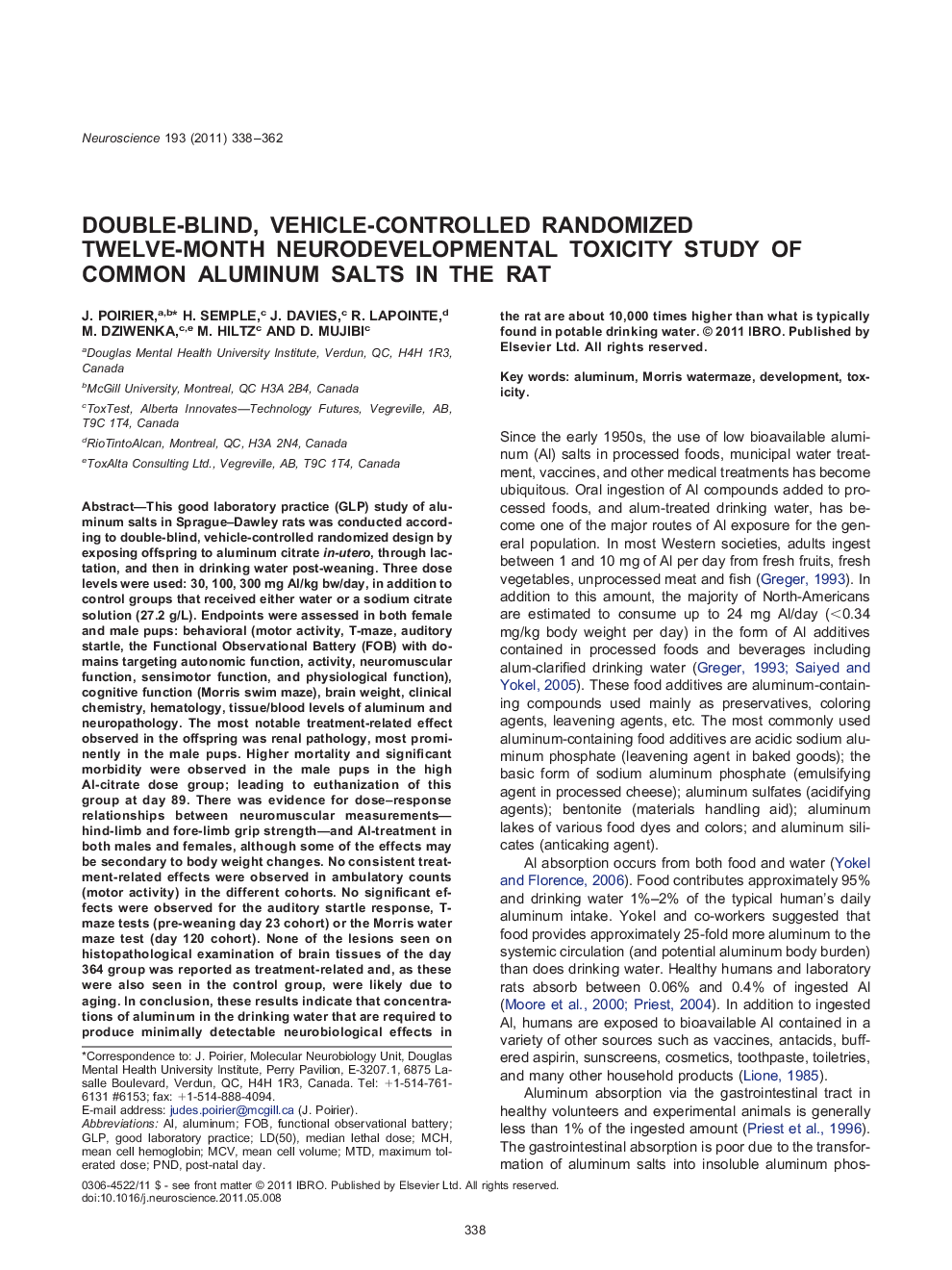| کد مقاله | کد نشریه | سال انتشار | مقاله انگلیسی | نسخه تمام متن |
|---|---|---|---|---|
| 4338763 | 1614883 | 2011 | 25 صفحه PDF | دانلود رایگان |

This good laboratory practice (GLP) study of aluminum salts in Sprague–Dawley rats was conducted according to double-blind, vehicle-controlled randomized design by exposing offspring to aluminum citrate in-utero, through lactation, and then in drinking water post-weaning. Three dose levels were used: 30, 100, 300 mg Al/kg bw/day, in addition to control groups that received either water or a sodium citrate solution (27.2 g/L). Endpoints were assessed in both female and male pups: behavioral (motor activity, T-maze, auditory startle, the Functional Observational Battery (FOB) with domains targeting autonomic function, activity, neuromuscular function, sensimotor function, and physiological function), cognitive function (Morris swim maze), brain weight, clinical chemistry, hematology, tissue/blood levels of aluminum and neuropathology. The most notable treatment-related effect observed in the offspring was renal pathology, most prominently in the male pups. Higher mortality and significant morbidity were observed in the male pups in the high Al-citrate dose group; leading to euthanization of this group at day 89. There was evidence for dose–response relationships between neuromuscular measurements—hind-limb and fore-limb grip strength—and Al-treatment in both males and females, although some of the effects may be secondary to body weight changes. No consistent treatment-related effects were observed in ambulatory counts (motor activity) in the different cohorts. No significant effects were observed for the auditory startle response, T-maze tests (pre-weaning day 23 cohort) or the Morris water maze test (day 120 cohort). None of the lesions seen on histopathological examination of brain tissues of the day 364 group was reported as treatment-related and, as these were also seen in the control group, were likely due to aging. In conclusion, these results indicate that concentrations of aluminum in the drinking water that are required to produce minimally detectable neurobiological effects in the rat are about 10,000 times higher than what is typically found in potable drinking water.
▶Rat exposed to aluminum in-utero, and then in drinking water until 12 month old. ▶Three doses of Al were used in addition to water or sodium citrate solutions. ▶Higher mortality was observed in only the male pups in the high Al-citrate dose. ▶Al had no effect on the startle response, T-maze or Morris Water Maze tests.
Journal: Neuroscience - Volume 193, 13 October 2011, Pages 338–362